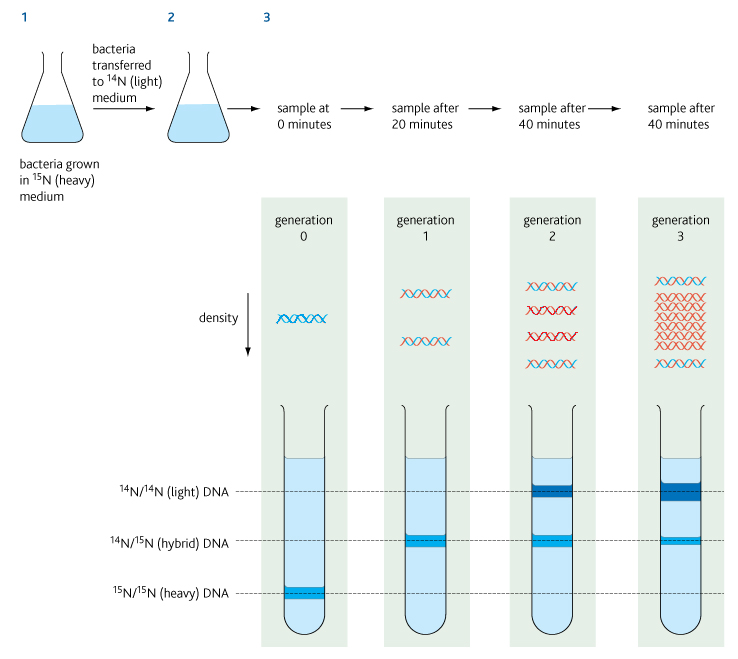Three hypothesis are conservative replication, semiconservative replication, dispersive replication.
Mesohlsohn Stahl used escherichia coli (E.coli) with heavy nitrogen isotope 15N.
This is to label all DNA with heavy nitrogen isotope 15N.
Bacteria with 15N transferred into medium containing normal isotope 14N .
Sample were removed at fix interval corresponding to the generation time of E.coli at a specific temperature.
DNA from different generations were extracted N-centrifuged in a solution containing CsCl to separate denser DNA containing 15N from lower DNA containing 14N.
Position of DNA with 15N and DNA with 14N was measured with uv light.
In generation zero, all DNA containing 15N on both strand of double helix forming a dark band near the base of centrifuge.
In generation one, all DNA 15N on one strand and 14N in another strand, forming a band btw heavy & light band.
in generation two, half of DNA were hybrid.another half were light DNA with 14N.
in generation 3, DNA with 14N three times thicker than 15N and number of hybrid DNA remain the same.
For the result of 1st generation ,it eliminates the conservative hypothesis not explain presence of hybrid DNA.
For the result of second generation, it eliminates dispersive hypothesis because the hypothesis not explaining the presence of light DNA in second generation.
Therefore Mesohlsohn & Stahl experiment proved that DNA replicate semiconservatively.
diagram from http://www.notesonzoology.com/dna-replication/dna-replication-modes-ingredients-and-ingredients/2406

diagram from http://www.keywordhouse.com/bWVzZWxzb24gYW5kIHN0YWhsICBzZW1pY29uc2VydmF0aXZl/
 diagram from http://www.keywordhouse.com/bWVzZWxzb24gYW5kIHN0YWhsICBzZW1pY29uc2VydmF0aXZl
diagram from http://www.keywordhouse.com/bWVzZWxzb24gYW5kIHN0YWhsICBzZW1pY29uc2VydmF0aXZl/

diagram from
http://www.keywordhouse.com/bWVzZWxzb24gYW5kIHN0YWhsICBzZW1pY29uc2VydmF0aXZl
No comments:
Post a Comment